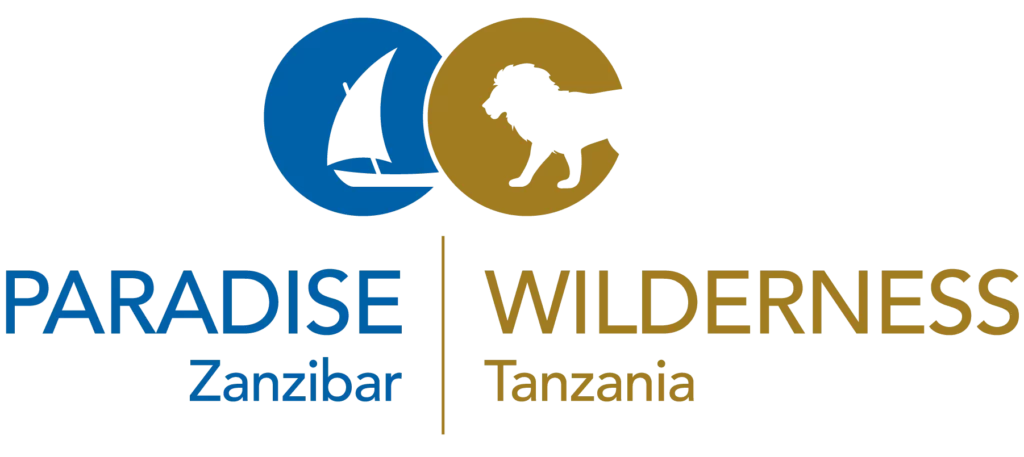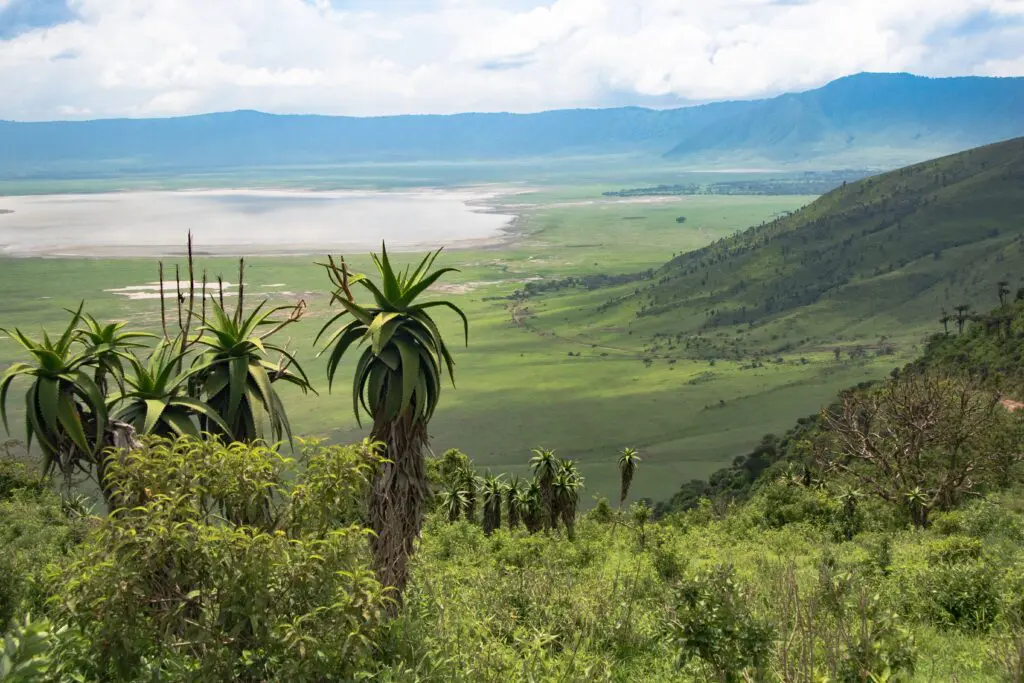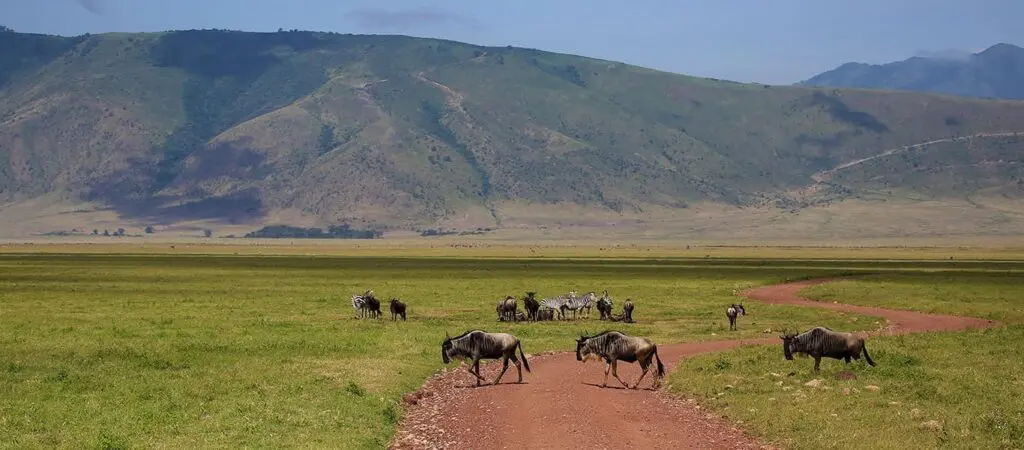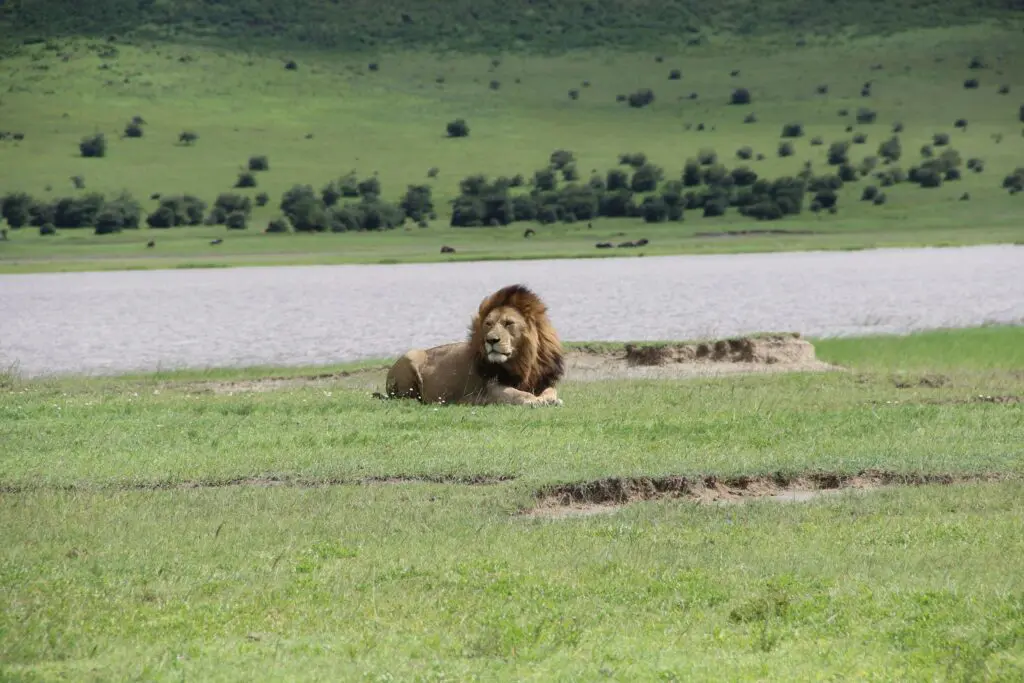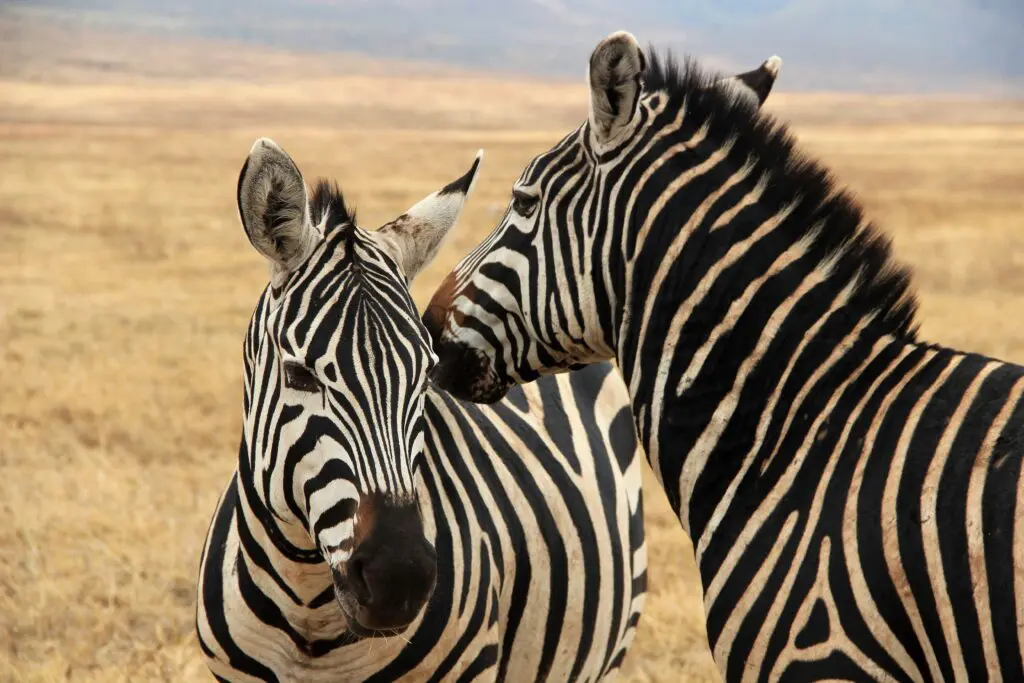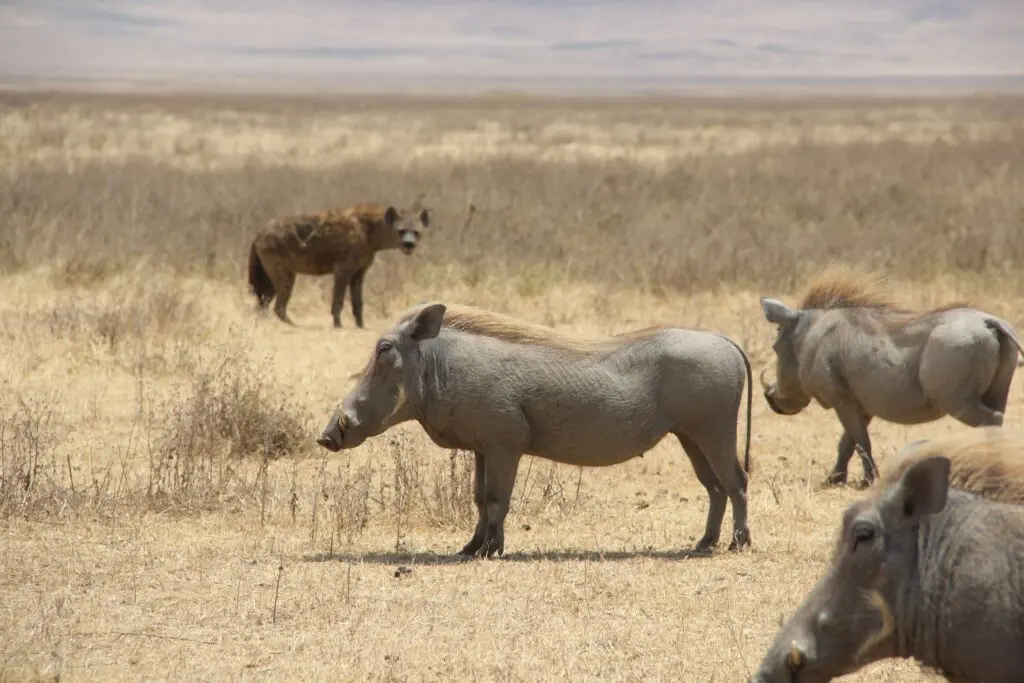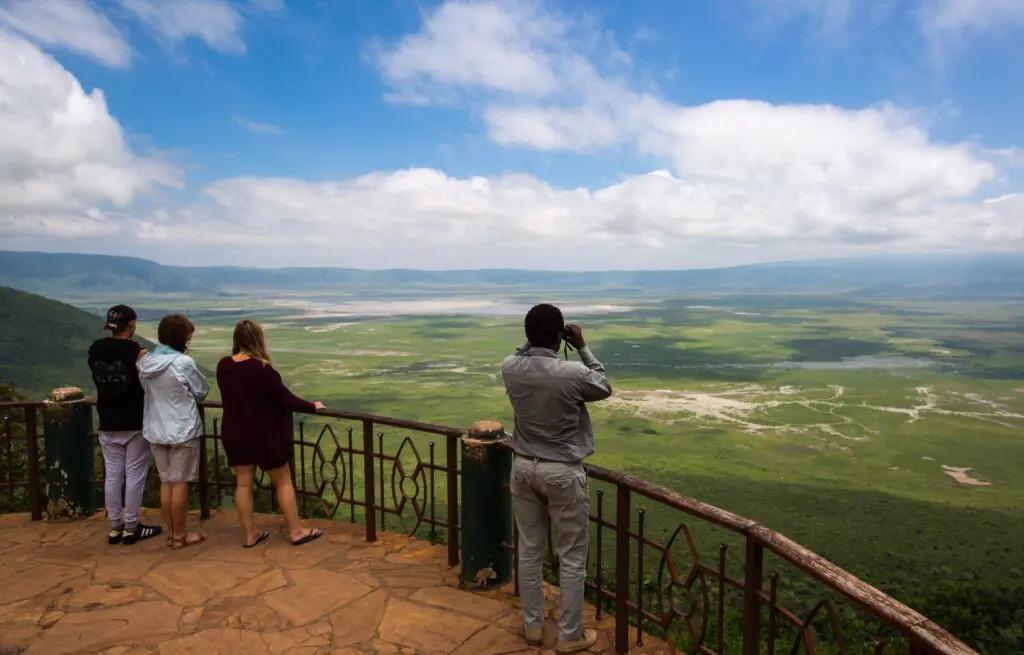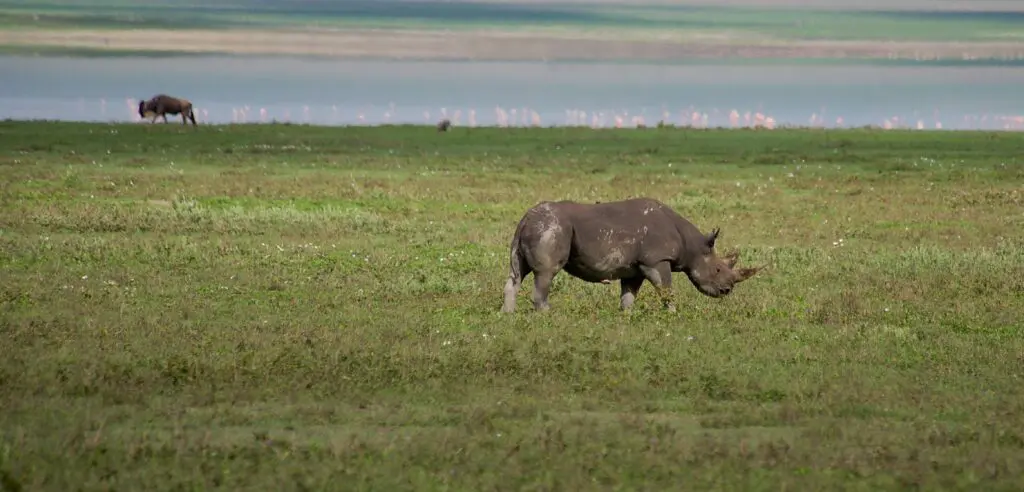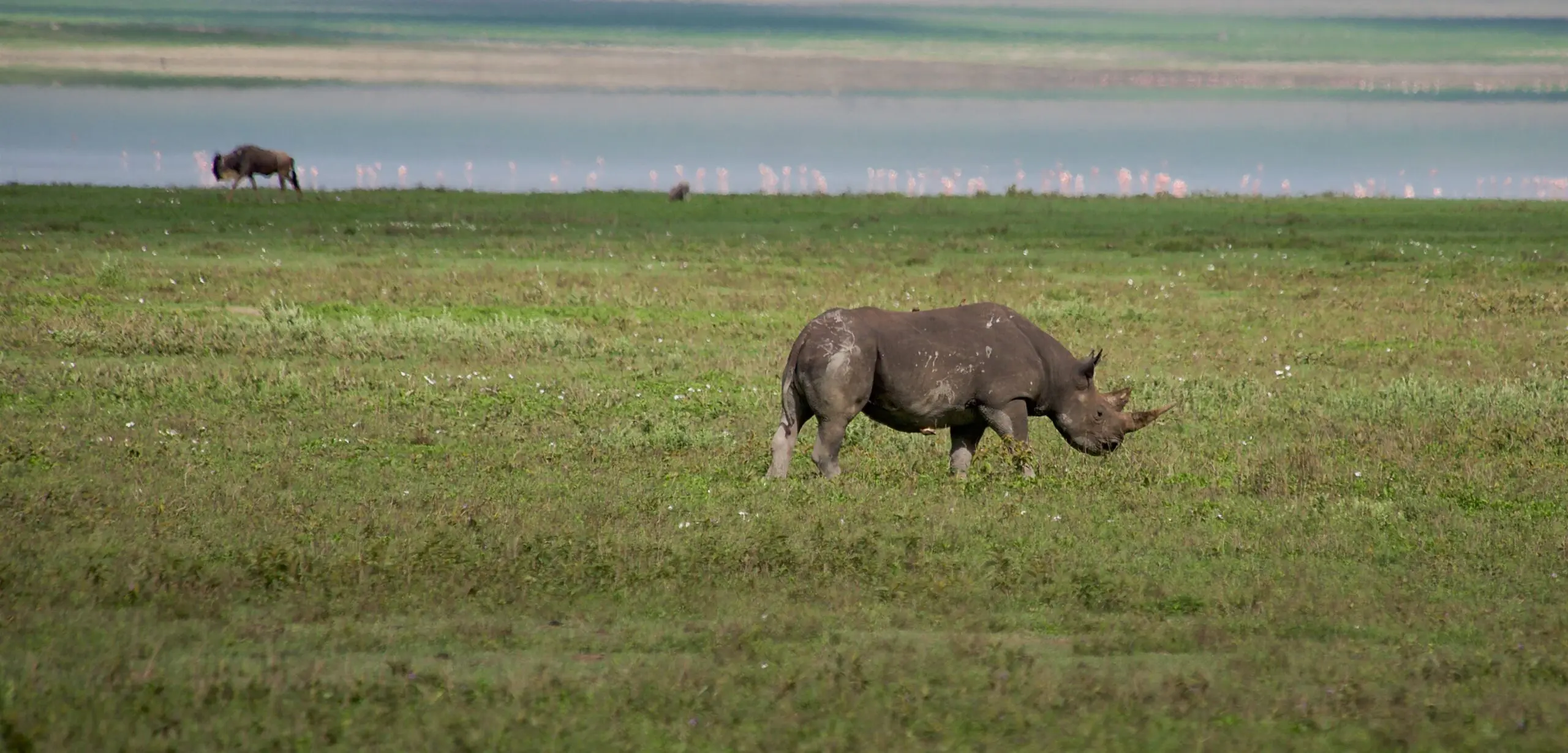
Ngorongoro Crater
World’s largest volcanic crater
Nothing can prepare you for the breathtaking beauty of Ngorongoro Crater. As you stand at the viewpoint and contemplate the Crater, you see the clouds drifting away around the crater rim and feel a cool, mountainous breeze. Mother Nature at her best. The Ngorongoro Crater is a UNESCO World Heritage Site and the world’s largest volcanic crater that has dried up and created a whole new ecosystem. It is also called the 8th wonder of the world.
With its lush green grasslands, shimmering lakes and meandering rivers, the crater is home to many wild animals, including the Big Five (lions, elephants, buffalo, leopards and rhinos). It is also an essential resting place for migrating birds. In short, Ngorongoro Crater is an enchanting piece of nature that will surprise you with its unparalleled beauty and biodiversity.
Wildlife you can spot:
Lions | Leopards | Black Rhinos | Elephants | Buffalo | Zebras | Wildebeest | Waterbucks | Impalas | Hippos | Hyenas | Flamingos | Birds of Prey
Wildlife of Ngorongoro Crater
Ngorongoro Crater is home to an impressive variety of wildlife, making it one of the most remarkable wildlife sanctuaries in the world. In this natural amphitheater-like setting, you can witness powerful lions guarding their territory, elegant leopards deftly prowling through the grass, imposing black rhinos, herds of grazing buffalo and robust elephants strolling peacefully.
It is a place where the Big Five converge and where countless other animals, including zebras, giraffes, hippos and numerous bird species, also thrive. A safari in the Ngorongoro Crater is an unforgettable opportunity to come face to face with the magnificent animals that call this unique landscape home. Ngorongoro Crater is an absolute must-see on any tour of northern Tanzania.
Practical information
Location: Ngorongoro Crater is located in northern Tanzania, near the
Serengeti National Park
.
Entrance fee: There is an entrance fee to enter the Ngorongoro Conservation Area, of which the crater is a part, plus an entrance fee to enter the crater by safari jeep. These entrance fees (park fees) are always included in our trips.
Best time to visit: Ngorongoro Crater is accessible year-round with many chances of spotting wildlife.
Climate: The climate in Ngorongoro Crater can vary, but it is generally cooler than in the surrounding areas because of the altitude.
